“The idea of wilderness needs no defense, it only needs defenders.” – Edward Abbey

Industrial wind turbines are arguably the most misguided, bloated technology ever invented. Instead of saving the planet, utilitarian zombies are sTaving it with carbon-dependent sprawl, dishonest slogans and misleading capacity data. Wind energy’s acreage requirements dwarf equivalent output from modern nuclear & natural gas power plants (many wind factories would sputter without gas backup). Big Wind is a prime example of corporate greenwashing in plain sight. Physics-defying claims for “100% Renewable Energy” have made wind energy “too big to fail” while it keeps getting physically bigger. Its impacts on scenery and wildlife have irreversibly corrupted the definition of environmentalism and its supporters are in too deep to admit their mistakes.
Windschmerz, a newly coined word*, describes the sinking feeling of witnessing a huge industrial plague being spun as good for the environment despite its obvious negative impacts. A good companion word is klugly (kludgy + ugly). And disenchanted Germans compare turbine towers to unsightly asparagus, calling them Verspargelung der Landschaft.
Instead of constraining the human footprint with serious conservation, rooftop solar and fast-tracked nuclear (e.g. safer molten salt reactors), people decided to turn rural lands into industrial parks. If this urban mega-sprawl is the new environmentalism, nature has a slim chance of remaining intact anywhere the wind blows and transmission lines are feasible.
Wind turbines are so absurdly large that one can only view them with profound disappointment or concoct stories about their “beauty” to distract from the obvious blight. Mainstream environmental groups have done exactly that, along with sneaky obfuscation of noise and wildlife threats. Whatever happened to “small is beautiful” in environmental circles? The Sierra Club, NRDC, The Union of “Concerned” Scientists, and even Audubon have sold out to platitudes like “wind is a vital part of our energy mix” (despite its futility as a fossil fuel replacement) and “they can be carefully sited” (despite growing protests as unsullied views run out). Something is rotten in Windmark when self-proclaimed environmentalists chide people for lamenting the replacement of natural horizons with spiky machines.
The dictionary needs another new word: windvironmentalist (Noun: A sellout/shill for Big Wind companies, or naive youth who think 500-foot machines are only the size of Tinkertoys.)
Even though it’s the environmental equivalent of trying to prevent arson with vandalism, wind power has a momentum that’s hard to control because an Environmental-Industrial Complex has grown around it, propped up with slick cover stories. When thousands or millions of jobs depend on massive construction projects, moral objectivity gets lost in the stampede. Anything green about this hulking enterprise has been a farce since the 1990s. A whole government/industry PR machine is dedicated to pretending these giants are midgets.
Independent climate activists like Greta Thunberg are sending mixed messages on this issue. She sailed across the Atlantic as an apparent symbol of wind power, yet implores governments to “do something” as they obliterate nature with that very thing. She’s at least one of the few questioning “green growth” but it’s hard to find specifics.
Windschmerz is a variant of the German word weltschmerz (world pain or sadness) focused on a specific technology that’s destroying nature while claiming to save the planet. Germany has been a test-case for this misguided form of progress with its Energiewende mandate. They went all the way with their landscape holocaust, driven by a zeal reminiscent of an earlier one. Germany’s scenic legacy has effectively been exterminated, especially in northern regions. Just as with earlier extremism, they mostly sat by and let it happen. They’ve built over 30,000 wind turbines (density equivalent of 826,000 in America) with little net CO2-reduction, due to additional carbon sources needed to back up wind, and social factors like the Jevons paradox. Germany serves as a scale model (or omen) for energy sprawl nightmares like the Green New Deal.
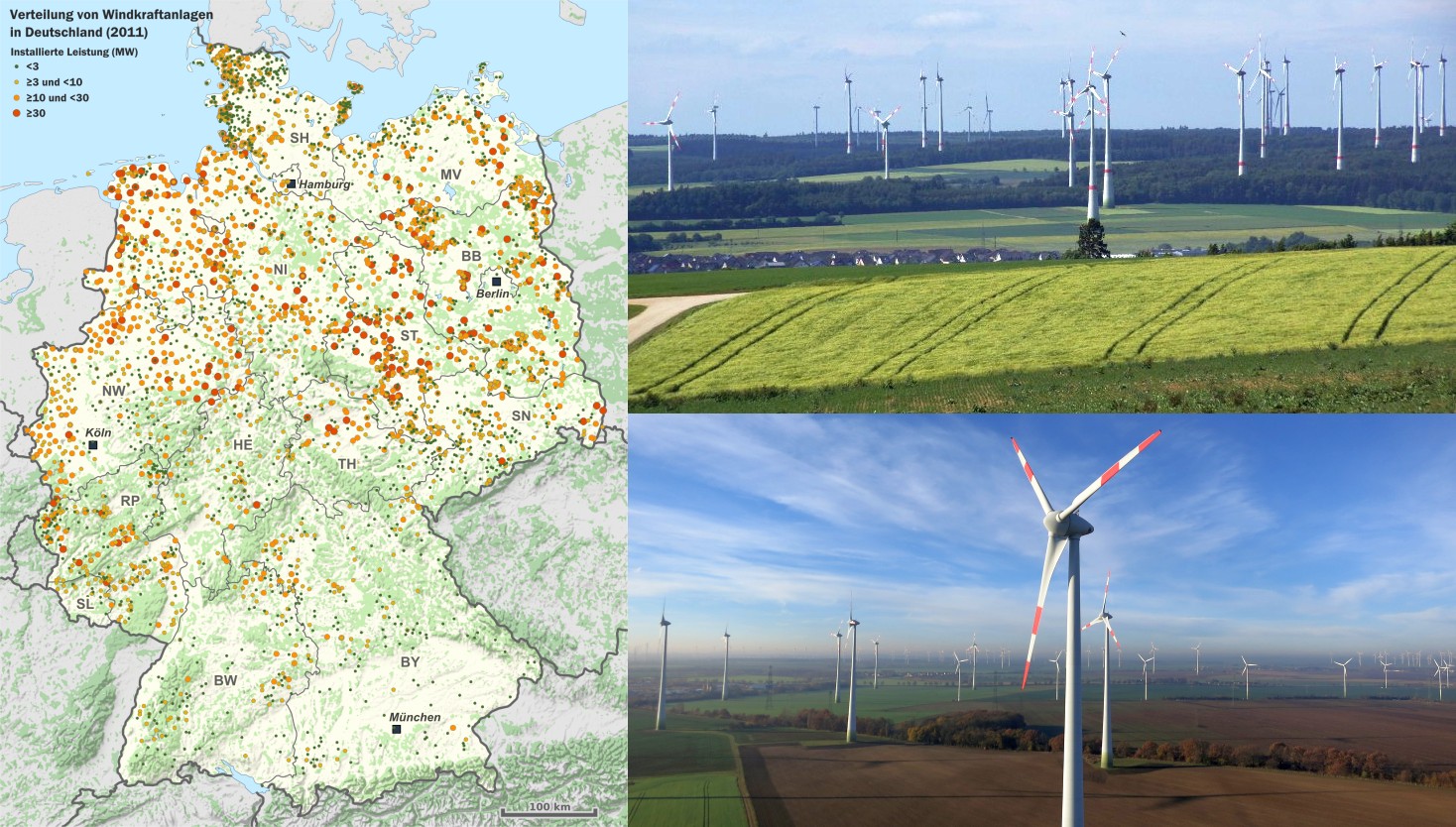
Despite getting a quarter of their electricity from nuclear power at one point, Germany plans to close all their nuclear plants by 2022, spurred in part by overreaction to the Fukushima tsunami event. This seems insane, since Germany hasn’t had major accidents, and newer technologies like molten salt can make nuclear far safer. By shuttering nuclear capacity, Germany not only dooms its landscape with more “clean energy” blight, it must safely dispose of nuclear waste away from temporary power station sites. It makes no economic sense to do this while trying to reduce carbon, since wind and solar will always need backup. One gets the impression that German governance will always be driven by strange emotions, well-meaning and otherwise.
Even if remote areas are spared from the Big Wind invasion, millions of acres of “near wilderness” on the outskirts of cities could become wind factories. Such lands are under constant threat as UGB zoning laws are weakened for utilitarian purposes. The industry seems happy to keep trashing scenery and wildlife until these eyesores are too thick for even the most deluded Greens. It used to be conservatives who didn’t respect landscapes but liberals have been successfully brainwashed by these scenery-eaters. It happened on the sly without adequate warning, mainly in Europe at first. Machine overpopulation gets similar reactions to denials of human overpopulation. “Isn’t this how modern life is supposed to be?” But, like the frog in a pot of water analogy, the masses will someday wake up and ask “What the hell happened to all the scenery?”

The desert is especially at risk because greentechies consider it “wasted space” that mu$t be used for utilitarian purposes. The animation below is part of the Alta Wind Energy Center east of Tehachapi, CA, which has held the record for biggest wind project in America. Another large area along I-10 north of Palm Springs has long been an ugly IWT experiment, blighting views of San Gorgonio mountain. Arid Texas landscapes are littered with vast wind turbine armies; no surprise, given their anti-environmental legacy. Texas shows that the nuts & bolts of wind power are hardly liberal anymore. One of the most inappropriate (“carefully sited”) locations is Spring Valley, roughly 8 miles northwest of Great Basin National Park, NV and half that distance to a major bat cave. There was a temporary shut down for bat-kills and biased workers can’t be trusted to track mortality.
The existence of eagle take permits shows that these “100% Renewables” icons are sanctioned to kill, despite industry attempts to deny the problem. Researchers are trying to trick eagles with sounds (on top of existing noise) to help them avoid wind turbines, but they ought to question the very existence of flyway gauntlets. Wind factories kill scenery along with wildlife and have been futile at reducing CO2. Their biggest pragmatic function is a construction industry gravy train. Big Wind claims that mitigation efforts will eventually work but the very premise of keeping birds and bats out of vast areas is implausible. The very existence of huge machines in flyways can discourage birds from using some routes, but that’s a Faustian benefit! Wind turbines are intruders, period. You have to either stop building them or accept that further carnage is inevitable and drop the “green” lie.
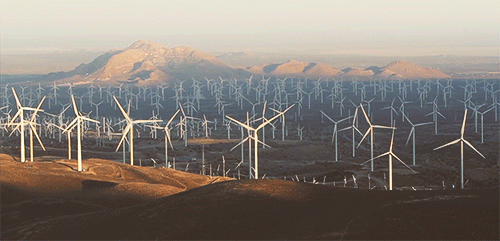
There are several ways people create unnatural landscapes:
- Gouging or drilling, e.g. mining, blasting, roads and wells.
- Removing plant cover with logging, farmland plowing, etc.
- Building structures for cities, factories and energy production.
Wind energy projects do all of the above except for deep drilling, and they are now the tallest structures in rural areas, especially on mountaintops which amplify their long-range visibility. The starkness of their contrast to natural surroundings is not just about size. Nothing else on that scale catches the eye with rotation, plus the shadow-flicker it creates. Mandatory red lights also intrude on skies that never had them. Wind power advocates downplay those obvious impacts, and ride on the psychological notion that anything (appearing to) fight carbon must not be causing harm. It’s a very narrow definition of harm, convenient to the industry’s agenda of grabbing subsidies for new construction projects.
Here are structures that environmentalists have routinely protested:
- BILLBOARDS (nowhere near the scale of industrial wind turbines)
- ROADS (wind turbine access roads encourage other intrusions in wild areas)
- HOUSING DEVELOPMENTS (aka urban sprawl)
- SKI LIFTS (similar to wind energy’s impacts on mountains, but much smaller)
- CELLULAR TOWERS (even 80-foot ones can spoil a view)
- SMOKESTACKS (resemble wind towers sans blades and are less numerous)
- TRANSMISSION LINES and TOWERS (commonly called PYLONS in Europe)
- RADIO ANTENNAS (gray, skinnier, don’t stand out like wind turbines)
- MOUNTAINTOP OBSERVATORIES (e.g. Hawaii’s 30-meter telescope project)
- MOUNTAINTOP MINING (wind turbines just carve up mountains differently)
- OIL DERRICKS and PLATFORMS (usually less visible at long range than wind towers)
- DAMS (dam removal is considered progress but wind turbines dam the sky)


Why are industrial wind turbines allowed to break so many old rules respecting nature? The worst wind pimps display no humility about their goals. They just want to build, build and build some more, like other rapacious enterprises. History is repeating itself in the context of petroleum replacing whale oil (literally saving the whales) while wind power now tries to replace oil by killing scenery, trees, birds, bats & insects. It’s a full-circle techno-fix blunder.
No matter how many airheads call them “beautiful,” wind turbines will always impact millions of people and animals in negative ways. The industry wants to expand what we see today by orders of magnitude if they can get away with it. Biologist E.O. Wilson’s plan for setting aside half of nature is already impossible. These machines are a colossal aesthetic blunder that doesn’t require number-crunching to analyze. All you need is eyes, ears and environmental awareness. They aren’t replacing older industrial scars like coal mines; they’re just adding to the total human impact. The moment wind turbines began expanding beyond their experimental beginnings and corporations got involved, it was inevitable that this would happen. The goal is to make them as tall as possible to catch elusive winds, which means they will never become less visible. It’s also a pipe dream that they can be made quiet or safe for flying animals. Most people in the industry must know this, which makes them doubly full of it.

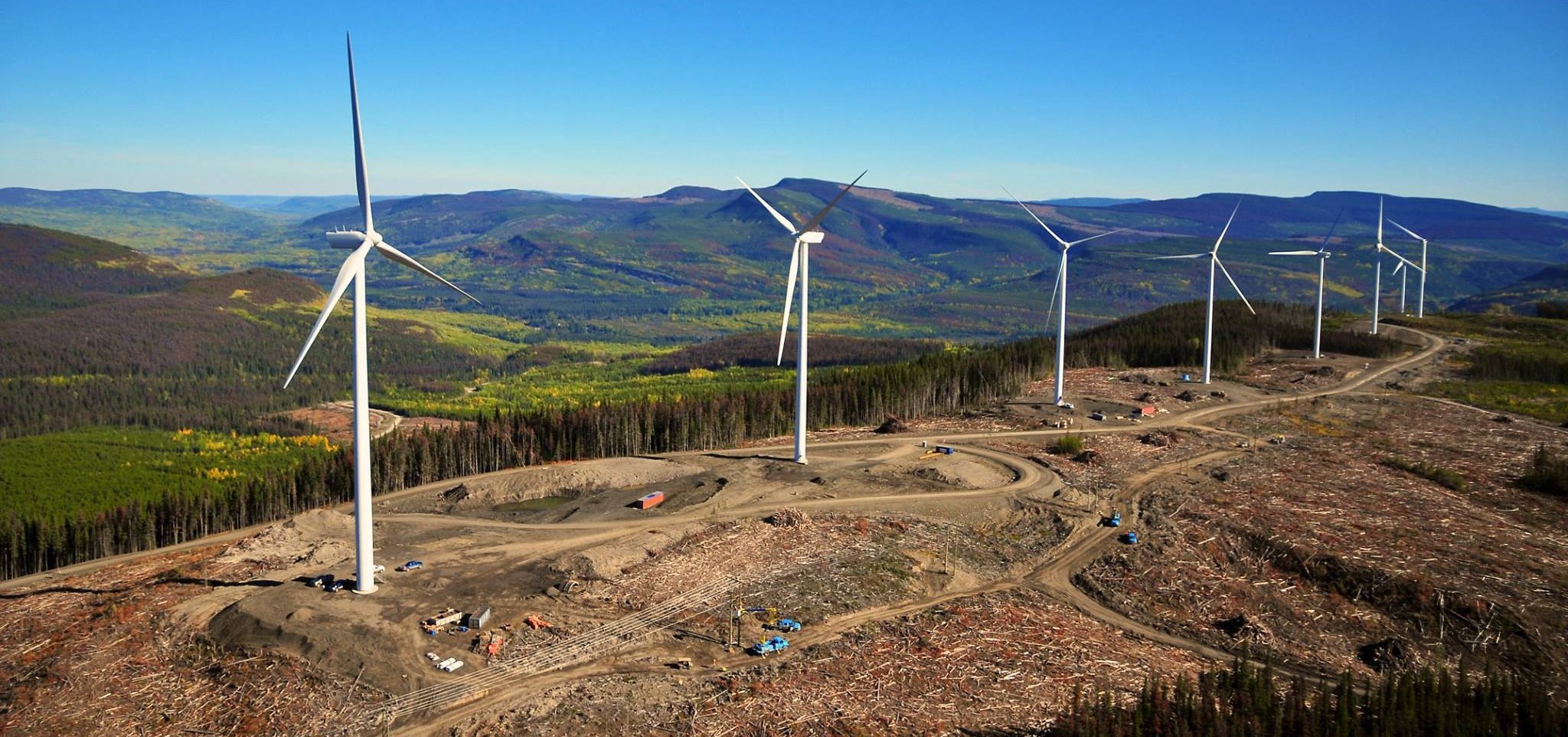
The 2018 Kilauea eruption generated publicity for “damaging” Hawaii even though it’s a natural force. Much more attention should be paid to relentless man-made destruction of tropical landscapes. The image below shows Maui’s Kaheawa Wind Power project occupying a significant piece of the island, with the smaller Auwahi project to the south (yellow ovals). The Kahuku project on Oahu was initially more ambitious but ran into problems, including a battery storage fire. Later, proposed 650-foot wind turbines in the same area prompted outcries over bat kills and further losses of scenery. Wind power sprawl on small land masses makes a clear case for their limits. The Thirty Meter Telescope on Mauna Kea is a similar case of construction overshoot, protested by those who still respect nature’s integrity. Another island in the crosshairs of Big Wind is Robbins Island, north of Tasmania. As usual, scenery and birds are under threat, and the project is opposed by people like former Australian Greens leader Bob Brown, who successfully fought a dam on Tasmania’s Gordon River. The similarities between damming water and damming air should be evident but the latter gets preferential treatment now.

Compounding the bleakness of this hypocritical sprawl, a sizable number of wind energy opponents are global warming deniers who think wind turbines were invented expressly to fight climate change and must be part of a Green/NWO cabal to infringe on their property rights. Equally thickheaded people might claim cancer is a hoax due to its association with unpleasant/ineffective chemotherapy. Donald Trump (environmental idiot savant on wind power) is a famous critic. Trump’s claim that wind turbines cause cancer was a gift to the industry, but they are a cancerous growth on the landscape. The “unbiased” FactCheck.org claimed “Trump Again Overblows Risks of Wind Power” but they lied about noise, birds and low-wind days vs. grid stability. UK writer James Delingpole is another example of someone who laments one type of environmental harm but ignores another. A promising book by an “ecologist,” called “The Wind Farm Scam” is tainted by climate denial and it’s common in other books like “Paradise Destroyed…” These people make reasonable points about the economic & environmental hypocrisy of wind sprawl, yet foolishly question the existence of gaseous atmosphere sprawl. Some otherwise clever sites like StopTheseThings are strewn with climate “skepticism” and get blacklisted on sites like SourceWatch as fossil fuel shills. Some critics, like Joanne Nova, market themselves as former “believers” in AGW, but have ditched the scientific method for conspiracist ideation. A similar anti-wind blogger seemed to flip-flop on whether AGW was real (before, after) with the common rural angle that people should do what they please until an obvious local offense occurs. Both sides of this debate try to vilify opponents instead of tackling intrinsic flaws in growth-based capitalism.
Ecomodernist Michael Shellenberger, nuclear power advocate and author of Apocalypse Never, is among a schizoid branch of environmentalists who see that wind (and solar) use too much open space, but refuse to admit that humans are overpopulated, just like their machines. He gets the sprawl problem but can’t bring himself to blame it directly on people. As a critic of Malthusian logic, Shellenberger thinks too much like an SJW (liberal roots) to understand that poor people aren’t fundamentally different than others in their desires. They’re pillaging nature by sheer numbers, if not personal consumption. Widespread wildlife decimation occurs in Asia and Africa via poaching, bushmeat, etc. All of this is happening alongside renewable energy sprawl, which further reduces wildlife habitat. Nuclear power is clearly needed for a smaller energy footprint, but if you’re claiming to be an environmentalist, it’s weird to dismiss the impact of people themselves.
Lesser-educated rural people are often caught in siting battles and add GOP ignorance to the wind debate. Some see corrupt officials like Scott Pruitt as righteous warriors against “unfair” EPA regulations while ignoring commonalities of all industrial developments. Even though their suffering is very real, they hurt their own cause with climate conspiracy theories. They should treat wind power as one of many rural threats, like deforestation (major component of wind projects), noise pollution from boom cars in rural drug ghettos, and homes sprawling into wild areas. It’s unclear how many rural anti-wind activists are OK with coal mining mountaintop removal but they should realize it’s all part of the pillaging continuum, regardless of whether it pays their bills (where wisdom ends and greed prevails). Their mindset of “us against city-slickers” distracts from everything the wind business has in common with fossil fuel, mining and logging interests.
Wind energy is the opposite of small-footprint thinking that real environmentalists should favor. It thrives on a single-action bias that fails to consider total environmental impact. It’s part of the same engineering mindset that destroys nature for money in the fossil fuel business. The standard ploy is that carbon is THE environmental demon and must be fought at any cost, though many wind farm workers are interchangeable with frackers. They are industrial mercenaries who do what they’re told and cash their checks. At least the old environmental villains weren’t overtly trying to fool people.
The next time you look at a horizon full of mutant pinwheels and windschmerz hits you, just let it happen. Then get angry and join the fight to stop them. We need more conscientious objectors to the industrial war on nature, beyond fossil fuels. It’s too late to help in many regions but some famous environmentalists have called for sanity. Germany has seen major resistance due to its high turbine density and VernunftKraft (translated) is one of the better known sites. Here are links to many other groups trying to do something locally and nationally. Hopefully, a few mainstream environmental groups will wise-up before these things metastasize. Small modular nuclear reactors could be the best hope for an alternative if the public can get over old fears.
“In some way or other, the human race has to learn how to leave the world alone.” – Alan Watts
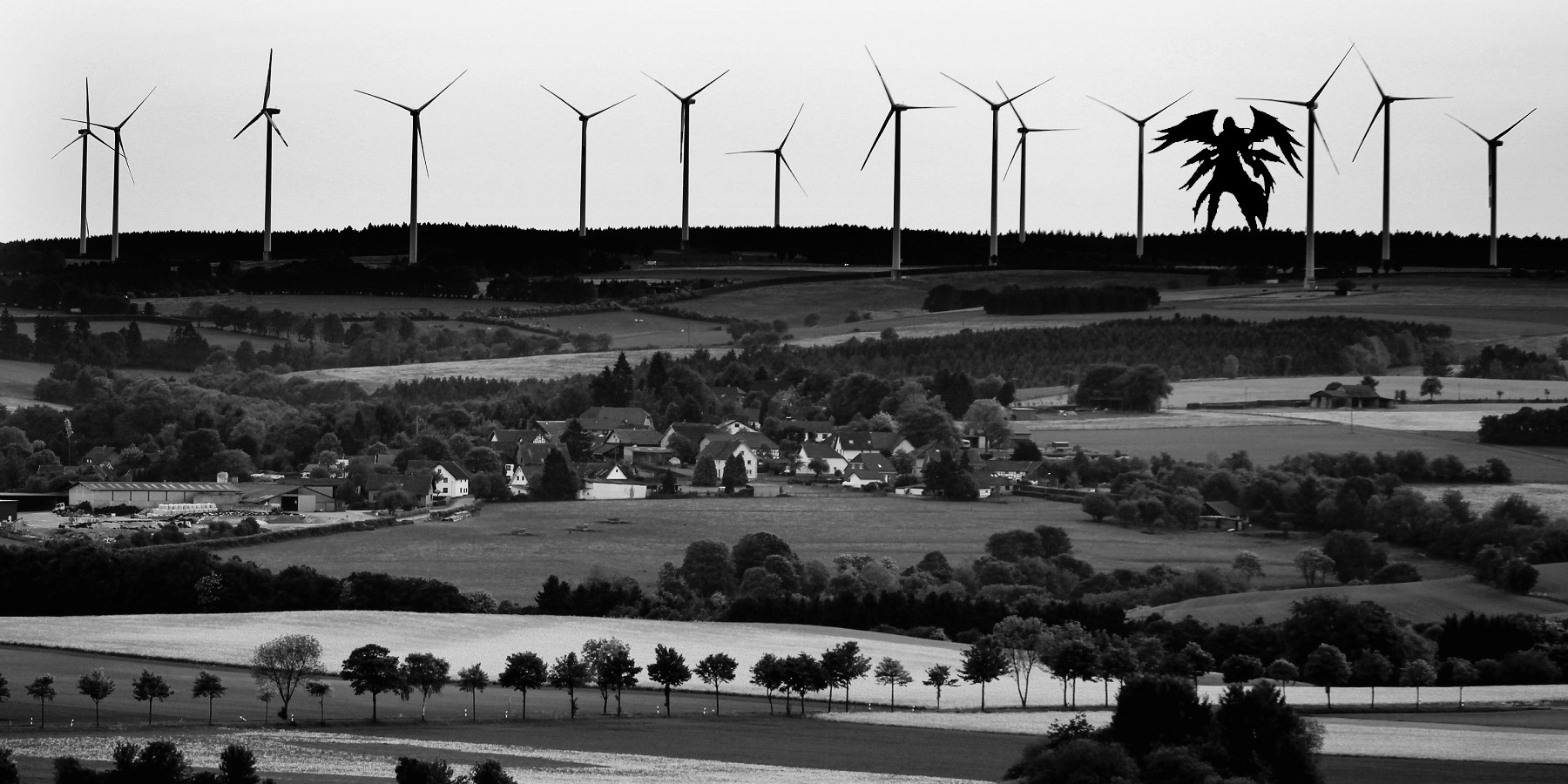

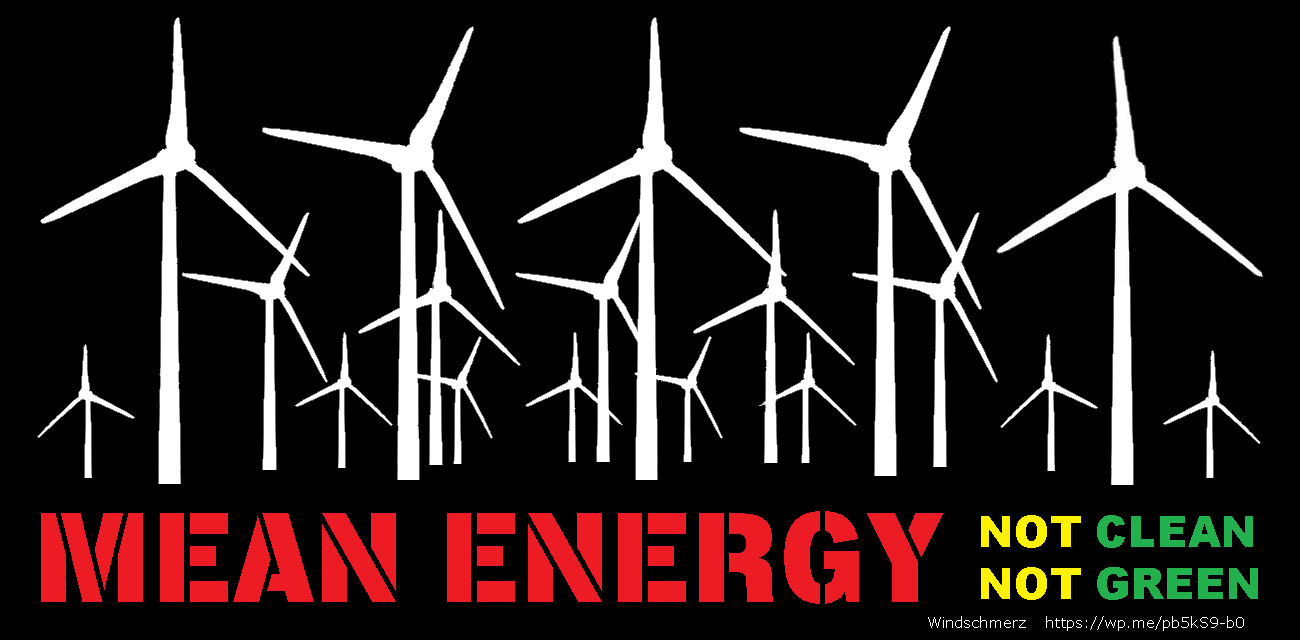
This page may be updated and reworded at random with new information. If you cite it, please post the link instead of a pasted snapshot. *The word “windschmerz” (with no spaces) may have been first used here, but nobody owns the definition.
Where I live I see them NOT spinning almost as often as they spin, and that should tell you something about the power claims they make.
LikeLiked by 1 person
It’s been commonly observed that these quasi-farms are built in marginal wind areas just to grab subsidies. They put up test towers to do wind studies but who’s really monitoring the monitoring? Itinerant workers have no conscience about the aftermath of a project as long as they get paid. Truckers and riggers surely split work with fossil fuel projects. Such people have been in the land-trashing business since industry began.
Ugly as they are already, the industry wants them even taller to milk every last gust in places like the U.S. South with its marginal wind speeds.
LikeLike
Pingback: Wind Energy Shills Capitalize on Trump Straw Man | False Progress